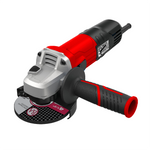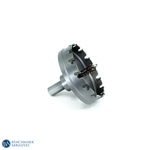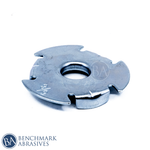
Essential Machines for Metalworking: Common Types and Their Uses

The metalworking sector is heavily based on several powerful and accurate machines to transform raw metal into a finished product. These machines are crucial for cutting, shaping, and finishing metal parts. Also, they are available in different types in the market, starting from standard lathes and milling machines to trendy CNC systems. This varied technology makes it possible to produce a wide variety of metal goods, highlighting their essential role in production. We shall talk about every machine used in the metalworking operations in this blog.
Best Machines Used in the Metalworking Industry
The following is the list of popularly used machines in the metalworking sector, which is categorised into three parts: cutting machines, shaping machines, and finishing machines.
A. Cutting Machines
In the metalworking sector, cutting machines are crucial tools specifically made to separate or remove material from the metal components. Here is the list of cutting machines used in the metalworking sector:
1. Lathes
Lathes are necessary metalworking tools that are perfectly suitable for shaping cylindrical workpieces. They rotate the material at high speed. They allow stationary cutting tools to accomplish a variety of precise operations by quickly rotating the material. Their versatility makes them essential for generating round or cylindrical parts for a variety of applications across a number of sectors, starting from manually operated lathes for easier operations to advanced CNC lathes that are capable of complex, automated machining.
2. Milling Machines
Milling machines are used to scrape material from the workpiece by using rotating cutters, which further help in making different shapes and features. Usually, the workpiece gets fed into the rotating cutter, enabling accurate production of flat surfaces, difficult contours, and grooves.
3. Drilling Machines
Drilling machines are essential tools for making accurate holes in metal. Apart from making holes, they are also capable of tapping internal threads, reaming holes to make them bigger and more accurate, and also used to make countersinks or counterbores for particular fastening applications. Because of their adaptability, they are essential in creating features in metal parts in various sectors, starting from large industrial drill presses to small portable drills.
4. Shearing Machines
Shearing machines are specialized cutting tools that precisely cut sheet metal in straight lines. They work by using two powerful blades that come together with great force to separate the material. They are crucial for the initial stage of metal sheets and come in different shapes, ranging from manual hand shears to large-scale hydraulic and mechanical systems. These machines are commonly used for industries including automotive, appliance manufacturing, and construction, wherein the sheet metal is a main material.
5. Plasma Cutting Machines
Plasma cutting machines are commonly known for melting and cutting electrically conductive metals, including aluminum, steel, etc., with a hot, ionized gas jet (at a high speed). They provide quick and reliable cutting for a wide range of thicknesses and are mainly used for complex shapes in fabrication and repair.
6. Oxy-fuel Cutting Machines
For cutting ferrous metals like steel, oxy-fuel cutting machines are a common and affordable choice. They work by mixing oxygen with a fuel gas (such as acetylene, propane, or natural gas) and heating a small section of the metal to its ignition point. Once you get this ignition temperature, the molten slag explodes due to a high-pressure stream of pure oxygen rushing at the heated region, which results in quick oxidation or burning of the metal. They are perfectly suitable for cutting thick materials and are often used for several steel fabrication applications.
7. WaterJet Cutting Machines
Waterjet cutting machines are highly adaptable, which use a high-pressure stream of water, usually combined with abrasives, for cutting different materials like metals, accurately. These machines are mainly suitable for sectors demanding accurate shaping and material integrity, such as aerospace, automotive, and even in food processing.
8. Broaching Machines
Broaching machines are mainly used for making accurate internal or external shapes in a single pass by using a toothed tool known as a broach. With its progressively larger teeth, this machine efficiently removes material. This machine offers excellent accuracy and repeatability, which makes it suitable for mass manufacturing parts, especially in the aerospace and automotive sectors.
B. Shaping and Forming Machines
Shaping and forming machines are crucial in metalworking. They turn raw materials into required three-dimensional shapes without eliminating material, similar to cutting machines. Instead, they use pressure to compress, bend, or stretch the metal into a different shape. The shaping and forming machine types include:
9. Bending Machines
Bending machines shape metal to produce angles and curves by exerting pressure. There are various types to cater to particular shapes and materials, including press brakes and tube benders.
10. Roll Forming Machines
Roll forming machines gradually shape metal strips into continuous profiles by rolling them through a chain of shaped rollers. This effective technique is highly suitable for producing large quantities of components with consistent cross-sections, such as panels, tubes, and channels, which are specifically used in manufacturing and construction.
11. Shaper Machines
Shaper machines are used to generate flat surfaces, clot, or other shapes using a reciprocating linear cutting tool to progressively eliminate metal. Although they are not as common in high-volume manufacturing these days, especially for complex cuts and on smaller workpieces.
12. Presses (Hydraulic/Mechanical)
Presses can be of two types- Hydraulic or Mechanical, that is commonly used to shape metal by employing an extreme amount of pressure. Hydraulic presses use fluid pressure for a more controlled and potent force, while mechanical presses employ mechanical linkages for a quick and repeated action. They are suitable for procedures like stamping, forging, and forming different metal components.
C. Finishing Machines
Finishing machines are used to polish the surface quality of metal components after being cut and shaped. These machines use several techniques to get the required smoothness, precision, and appearance. Here is the list of different types of finishing machines for metalworking.
13. Grinding Machines
To accurately eliminate material and achieve a smooth, precise surface finish on metal components, grinding machines use abrasive wheels. They are available in different types for various applications, ranging from rough stock removal to fine polishing of cylindrical, flat, or challenging shapes.
14. Polishing Machines
Polishing machines use fine abrasives and buffing wheels to get smooth, typically shiny surfaces on metal components. They are suitable for scrapping minor flaws and improving the overall appearance, which is essential for both aesthetic and practical reasons in various sectors.
15. Sandblasting Machines
Sandblasting machines are popularly used to prepare, clean, or etch the metal surfaces by using a pressured stream of abrasive material. This process successfully removes corrosion, paint, or scale along with other pollutants, which results in creating a smooth surface or coatings or improving the texture of a surface.
Other Machines Used in The Metalworking Industry
16. Welding Machines
While not a shaping or cutting tool, welding machines are critical for joining metal components by creating a strong bond with heat or pressure. They are used in countless fabrication applications to create durable, permanent connections.
17. CNC Machines
Computer Numerical Control (CNC) is a technology that automates machining operations. This technology is applied to lathes, milling machines, and grinders, allowing them to produce complex, high-precision parts with greater efficiency and repeatability than manual machines.
The Importance of the Right Machine
The right metalworking machine is essential for a successful project. From the initial cutting of a raw material to the final polishing of a finished component, each machine plays a crucial role. Lathes are for cylindrical parts, milling machines are for flat and contoured surfaces, and presses are for forming and stamping. The first step to becoming a master of the art and science of metallurgy is to understand these many tools and their purposes.



































































